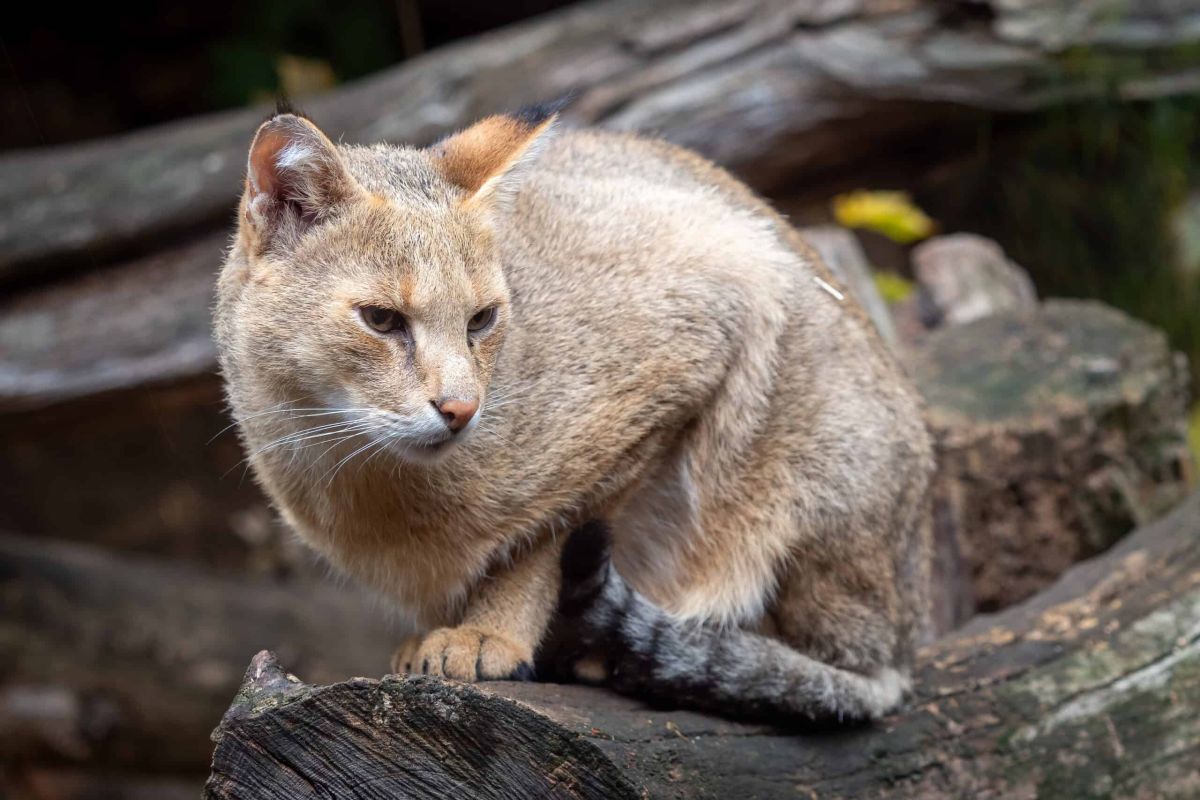The Jungle Cat: A Fascinating and Agile Feline

The Jungle Cat, scientifically known as Felis chaus, is a medium-sized wild cat species that roams across the wild landscapes of Asia and parts of the Middle East. Renowned for its adaptability and hunting prowess, the Jungle Cat plays a crucial ecological role in its habitat.
Physical Characteristics
Jungle Cats are visually distinct, easily recognized by their slender, agile bodies. They typically weigh between 6 to 16 pounds (2.7 to 7.3 kg) and possess a height ranging from 14 to 20 inches (35 to 50 cm) at the shoulder. Their coat is short and coarse, usually presenting a sandy to grayish-brown hue, which serves as excellent camouflage in their grassy or bushy habitats. The distinctive features of the Jungle Cat include:
- Ears: Their ears are long and pointed, often adorned with tufts of fur on the tips.
- Tail: The tail is moderately long, measuring about 12 to 16 inches (30 to 40 cm), with a black tip and 2 to 3 dark rings.
- Eyes: They possess sharp, piercing eyes that allow for excellent night vision, making them effective nocturnal hunters.
Habitat and Distribution
The Jungle Cat can be found in a variety of habitats, including grasslands, wetlands, and scrub forests. Its range extends across several countries in South and Southeast Asia, including India, Bangladesh, Nepal, Myanmar, and as far west as Egypt and the Middle East. These cats often inhabit areas near water sources, such as rivers and marshes, where they can find abundant prey and shelter.
Diet and Hunting Behavior
As carnivores, Jungle Cats primarily feed on small mammals, birds, and amphibians. Their diet can vary depending on the availability of prey in their environment. They are skilled hunters, employing stealth and agility to stalk and capture their quarry. Unlike some of their feline relatives, Jungle Cats are known to be proficient swimmers, a trait that allows them to hunt aquatic prey such as fish and crustaceans.
Jungle Cats are mostly solitary creatures, with males and females coming together only for mating. They establish territories that they mark with scent markings, vocalizations, and scratch marks. In terms of vocalizations, they are known for a range of sounds, including growls, yowls, and meows, much like domestic cats.
Reproduction and Lifecycle
The breeding season for the Jungle Cat typically occurs between January and June, with a gestation period of approximately 60 to 70 days. Females usually give birth to a litter of 2 to 4 kittens in a sheltered den, often found in dense grass or thorny bushes. The kittens are born blind and rely heavily on their mother for care and sustenance during their early weeks. They begin to venture out and explore their surroundings at around 4 weeks of age and start learning to hunt by 3 months.
Conservation Status
The Jungle Cat is classified as “Least Concern” by the International Union for Conservation of Nature (IUCN). However, it still faces several threats, including habitat loss due to agricultural expansion, urbanization, and poaching. Local populations can also be affected by hunting, as they may be targeted for fur or inadvertently trapped in snares intended for other animals.
Conservation efforts are essential to ensure the survival of the Jungle Cat. It is vital to protect their natural habitats and mitigate human-wildlife conflicts through education and awareness programs. Additionally, establishing wildlife corridors and promoting sustainable land-use practices can help preserve the delicate ecosystems that these cats depend on.
Conclusion
The Jungle Cat (Felis chaus) is a remarkable creature that embodies the resilience and adaptability of wildlife. With its unique physical traits, skilled hunting techniques, and vital ecological role, this feline inhabitant of grasslands and wetlands deserves greater attention and protection. By increasing awareness of the challenges it faces, we can contribute to safeguarding the future of this extraordinary member of the wild cat family.



